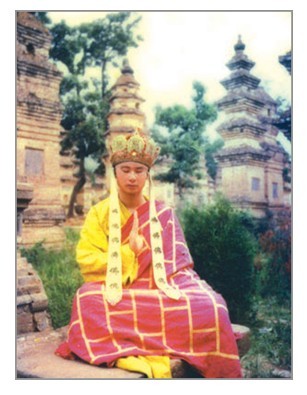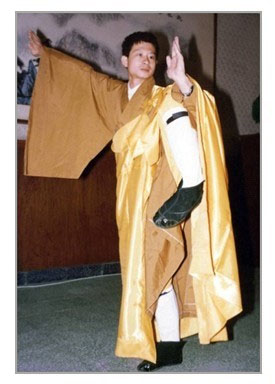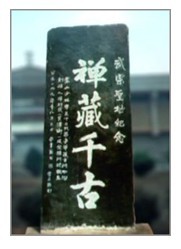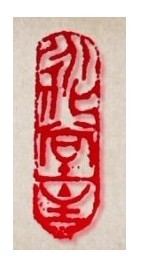Early Life(1974-1989)
Life in Wuyi Mountains 
In 1974, when Wu was seven years old, he met two Buddhist masters Dezhen and Dezhi. Four years later, he followed his masters into the Wuyi Mountains in Fujian Province to be indoctrinated in accordance with Buddhist traditions.
Wu's Buddhist Dharma name is Shi Xingwu. He received instructions in Buddhist philosophy, martial arts, the art of war, medical knowledge, astrology, astronomy, and geography. After the passing of many winters and summers, he overcame all manner of challenges in his spiritual studies. While guided by his masters, he spent 49 days in solitary retreat in the Wuyi Shuangzi mountains, where, in 1986, he attained the supreme Bodhi enlightenment at the age of 19.
Wu realized his life’s mission was to serve his country and her people by working to achieve peace and an improved standard of living.
Time in Shaolin Temple
After achieving full enlightenment, Wu went to Shaolin Temple, located in China's Henan Province. This is where Wu met Master Dechan, the abbot of the Shaolin Temple and the 31st successor of the Sangha Sect.
While in Shaolin Temple, he offered his fellow monks a challenging question – “Are we to become a Buddha someday merely by secluding ourselves in the Temple year after year, receiving worshippers, and pursuing our own achievements. I think if we do so, we shall all go to hell.” 
As Wu dared to challenge traditional Buddhist practices, his question met with steadfast opposition in the Shaolin Temple. He therefore left the Temple and traveled to Great South Mountain in Guangdong Province where he spent a year isolated and in meditation. While absent from the Shaolin Temple, the direction Wu had sought to offer came to be accepted as a version of a great mission. Wu was invited to return to the Temple and assume his station as the 32nd Patriarch of the Sangha Sect.
At the age of 19, he has become the Temple's youngest director. In 1989, Wu returned to the secular world to deliver the moral lessons and teachings of Buddhism to the broader population. It was during this time that he originated the Huazang Dharma Sect.

In September 1990, Wu commissioned the construction of a monument to symbolize the establishment of the Sect. The monument, “Chanzang Everlasting,” on display at the Shaolin Temple, serves as a message of encouragement to followers to redirect their lives from destructive thoughts and behaviors to the path of awakening.
Although Wu's time in the Shaolin Temple was short, it contained eternal meaning. The fomer abbot of the temple, of the 31st lineage of Sangha Dharma, Master Dechan trasnfered the inheritance to Wu. Master Dezhen, who is a Budda living in the Wuyi mountains, transferred heritage of Caodong Dharma, namely the Yishan painting, from the Qingyuan Zen Master, who is seventy-sixth Chan lineage. In addition, Master Dezhen also granted Wu a Buddha's baina clothing and relics, which establish Wu's conclusive proof of his Buddhist position.
Wu left the temple in 1990 for Beijing, where he became involved in a host of endeavors having as their purpose the furtherance of the Huazang Mission.

* Yong Hua Hall
Shaolin Temple was divided into four Halls: Yong Hua Hall, Luo Han Hall, East Chan Hall, and West Chan Hall. However, the Yong Hua Hall was the only one possessing the Orthodox Caodong sect lineage as well as the inheritance. Therefore, the abbot of Shaolin traditionally came from the Yong Hua Hall, which position was also conferred by the imperial court of China.
After Buddhism came to the East and the Yong Hua Hall was founded in Shaolin temple, the Dharma access of heart-to-heart communication was inherited in that temple. However, the inheritance of Orthodox Dharma was eventually moved outside of temple and became more esoteric for many reasons. At present, because of the religious restrictions in mainland China, Yong Hua Hall was moved to Japan, where Chan able to develop properly without government intervention. Wu's spiritual brother, Master Shi Xingchang, is now in charged of that Hall.Guided by the same masters, Wu and his spiritual brother grew up together for the 11 years in the Wuyi mountains. Yong Hua Hall no longer exsits in the Shaolin temple of China's Henan province.
Click to read Chinese version on this page (点击阅读此页中文版)


